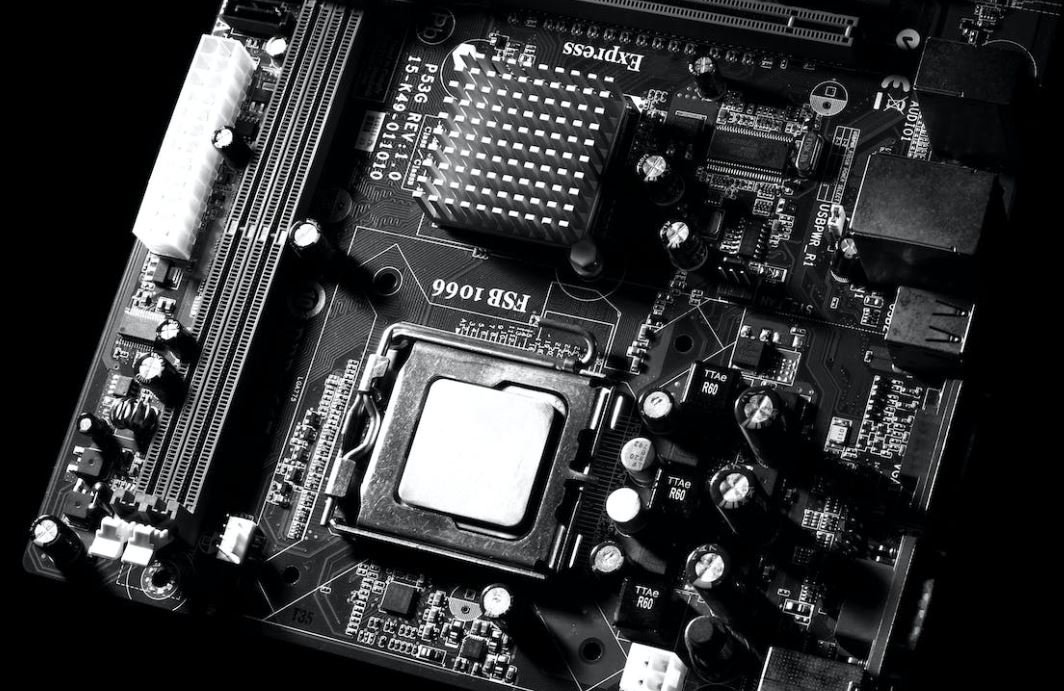When Writing a Check
Introduction
Writing a check may seem like a thing of the past with the rise of online banking and digital payments, but it still has its uses in certain situations. Whether you are paying bills or making a payment to an individual or business, understanding how to correctly write a check is crucial to avoid any issues. In this article, we will walk you through the step-by-step process of writing a check, provide key takeaways, and share some interesting facts about checks.
Key Takeaways
- Writing a check correctly is essential to avoid any payment issues.
- Always use permanent ink to fill out the check.
- Ensure that the check is signed and dated before handing it over.
- Keep a record of all the checks you write for future reference.
- Double-check the amount written in both numbers and words to avoid any discrepancies.
Step-by-Step Guide to Writing a Check
Follow these steps to ensure you correctly write a check:
- Fill in the current date on the top right corner of the check.
- Write the name of the payee (the recipient) on the “Pay to the Order of” line.
- Write the check amount in both numbers and words.
- Fill in the memo section (optional) to provide additional information about the payment.
- Sign the check in the bottom right corner.
- Tear the check along the perforated edge, if applicable.
*Remember to always use a pen with *permanent ink* to ensure the check cannot be altered or tampered with later.*
Interesting Facts About Checks
Here are some intriguing facts about checks:
| Fact | Description |
|---|---|
| 1 | Checks have been used for over 350 years and were first introduced in Holland. |
| 2 | The largest known check ever written was for the amount of $9 billion, issued in 2014. |
| 3 | Before checks became widely used, people would often carry letters of credit from merchants to use as a form of payment. |
Common Mistakes to Avoid
When writing a check, be cautious of these common mistakes:
- Forgetting to sign the check, which makes it invalid.
- Not filling in the check amount correctly, leading to confusion or potential fraud.
- Writing checks without sufficient funds in your account, resulting in an overdraft fee.
*Remember to *double-check* all information on the check to avoid these mistakes.*
Ensuring Payment and Record-Keeping
After writing a check, it is important to keep track of it for proper record-keeping. Consider implementing these strategies:
- Keep track of all checks written in a check register or online banking app.
- Regularly review your bank statements to ensure there are no unauthorized transactions.
- Shred old canceled checks to prevent identity theft.
*Stay vigilant in *monitoring your banking activity* to safeguard your financial information.*
Conclusion
Writing a check may not be as common as it once was, but it is still necessary in certain situations. By following the step-by-step process outlined in this article, avoiding common mistakes, and staying organized with your check records, you can confidently write checks and ensure your payments are properly processed.
Common Misconceptions
Not Enough Funds in the Account
One common misconception people have when writing a check is that they must have enough funds in their account to cover the check amount. However, this is not entirely true. While it is recommended to have sufficient funds in your account to avoid overdraft fees or bounced checks, some banks offer overdraft protection or allow you to write checks that exceed your available balance.
- Overdraft protection may be available for certain types of accounts.
- Writing a check that exceeds your available balance may result in additional fees or penalties.
- It is best to check with your bank to understand their specific policies regarding insufficient funds.
Post-Dating a Check
Another misconception is that post-dating a check will ensure it is not cashed before a specific date. Many people believe that if they write a future date on the check, it will be invalid until that date. However, post-dated checks hold no legal value, and they can still be cashed or deposited before the specified date.
- Post-dated checks can still be deposited or cashed by the payee before the specified date.
- It is advisable to communicate with the payee if you do not want the check deposited until a certain date.
- Opting for other payment methods, such as electronic transfers, can ensure precise payment timing.
No Need to Sign the Back of the Check
Some individuals mistakenly believe that it is unnecessary to sign the back of a check when depositing it. However, endorsing a check by signing the back is a crucial step required by financial institutions to verify the authenticity of the transaction. Neglecting to endorse a check properly may result in it being rejected or delayed.
- Ensure you have signed the back of the check before depositing it.
- Some checks may require additional information or endorsements, such as “for deposit only” or “pay to the order of [name].”
- Failure to endorse a check correctly may lead to processing delays or rejection by the bank.
Checks Expire After a Certain Period
Many people mistakenly assume that checks expire after a specific period, rendering them useless. However, in most cases, checks do not have an expiration date. Nevertheless, it is advisable to deposit or cash a check promptly to avoid any potential issues or delays.
- Although checks may not have an expiration date, financial institutions may have their own policies regarding stale-dated checks.
- It is best to verify with your bank how long they will honor a check before depositing it.
- Depositing a check quickly can help prevent any complications and ensure timely access to the funds.
Checks Are Completely Secure Payment Methods
Some people believe that checks are a completely secure method of payment. While checks can be secure when used responsibly and with caution, they are not immune to fraud or unauthorized reproduction. It is essential to handle and store checks securely to protect against unauthorized use or potential financial loss.
- Maintaining control of your checkbook and checks can help prevent unauthorized use.
- Keeping track of your checks and monitoring your bank statements regularly can help identify any fraudulent activities.
- Using additional security measures, such as using secure mail to send checks or electronic payment methods, can reduce the risk of check-related fraud.
Step 1: Introduction
Writing a check is a fundamental skill that everyone should master. Whether it’s for paying bills, making a purchase, or transferring money, knowing how to properly fill out a check ensures accuracy and prevents any potential errors. In this article, we will present ten informative tables that will guide you through the process of writing a check, providing useful facts and tips along the way. So let’s dive in and explore the art of check writing!
Table 1: Anatomy of a Check
A check is comprised of various sections, each with its own significance. Understanding the different components of a check is crucial to correctly filling it out. This table breaks down the elements of a standard check:
| Section | Description |
|---|---|
| 1. Payee | The individual or company who will receive the money |
| 2. Date | The date the check is issued |
| 3. Amount in Numeric Form | The monetary value of the check expressed in numbers |
| 4. Amount in Written Form | The monetary value of the check written out in words |
| 5. Memo | An optional field to include a note regarding the purpose of the check |
| 6. Signature Line | The space where the account holder signs the check |
| 7. Bank Information | The bank’s name, address, and routing number |
Table 2: Common Check Writing Mistakes
Even with the rise of electronic transactions, checks are still used regularly. However, mistakes can easily occur if one is not familiar with the process. This table highlights common errors to avoid:
| Mistake | Description |
|---|---|
| 1. Incorrect Date | A date that is missing, illegible, or not current |
| 2. Misspelled Payee Name | Errors when writing the recipient’s name |
| 3. Forgetting to Sign | Leaving the signature line blank or unsigned |
| 4. Inaccurate Amounts | Mismatch between the written and numeric values of the check |
| 5. Unclear Handwriting | Illegible writing that can lead to confusion |
Table 3: Check Number Ranges
Each check has a unique identification number known as the check number. The check number helps to track transactions and acts as a reference. The following table demonstrates common ranges for different types of checks:
| Check Type | Number Range |
|---|---|
| Personal Checks | 1001-3000 |
| Business Checks | 3001-5000 |
| Cashier’s Checks | 5001-6000 |
| Money Orders | 6001-7000 |
| Traveler’s Checks | 7001-8000 |
Table 4: Check Clearing Process
When writing a check, it is important to understand how it will be processed by banks. This table outlines the typical clearing process:
| Step | Description |
|---|---|
| 1. Deposit | The recipient deposits the check into their bank |
| 2. Encoding | The check’s information is encoded electronically |
| 3. Clearinghouse | The check is sent to a clearinghouse for verification |
| 4. Clearing | The issuing bank verifies the check’s validity |
| 5. Funds Transfer | The money is transferred from the account holder’s bank to the recipient’s bank |
Table 5: Average Check Processing Times
Knowing how long it takes for a check to clear can help manage personal finances effectively. The following table provides average processing times for different types of checks:
| Check Type | Processing Time |
|---|---|
| Personal Checks | 2-3 business days |
| Business Checks | 1-2 business days |
| Cashier’s Checks | 1 business day |
| Money Orders | 1 business day |
| Traveler’s Checks | 1 business day |
Table 6: Check Fraud Statistics
Although checks are generally secure, check fraud remains an ongoing issue. This table displays some alarming statistics related to check fraud:
| Statistic | Percentage |
|---|---|
| Counterfeit Checks | 62% |
| Forged Endorsements | 32% |
| Altered Checks | 6% |
Table 7: Best Practices for Check Writing
To minimize errors and ensure a smooth check-writing experience, it’s advisable to follow certain best practices. This table outlines recommendations for writing a check:
| Practice | Description |
|---|---|
| 1. Use a Gel Pen | Gel pens are less likely to smudge and provide clear, readable writing |
| 2. Double-Check Information | Verify the accuracy of the payee name, date, and amount |
| 3. Record Check Details | Keep a record of the check in a check register or digital tool |
| 4. Store Securely | Keep checks in a safe place to prevent loss or theft |
Table 8: Benefits of Electronic Checks
In recent years, electronic checks, also known as e-checks, have gained popularity due to their convenience and efficiency. This table highlights the advantages of electronic checks:
| Benefit | Description |
|---|---|
| 1. Faster Processing | E-checks clear more quickly than traditional paper checks |
| 2. Cost-Effective | Eliminates the need for checks, envelopes, and stamps |
| 3. Eco-Friendly | Reduces paper waste and environmental impact |
| 4. Improved Record-Keeping | Electronic checks integrate with accounting software for easy tracking |
Table 9: Check Security Features
To prevent check fraud, various security features are incorporated into checks. Familiarize yourself with these elements by referring to the table below:
| Feature | Description |
|---|---|
| 1. Watermark | A faint image or pattern visible when held up to light |
| 2. Security Thread | An embedded thread that is only visible under ultraviolet light |
| 3. Microprint | Small, crisp text that becomes blurry if photocopied |
| 4. Chemical Reactivity | Inks or papers that react when exposed to chemicals or solvents |
Table 10: Quick Tips for Check Writing
Before we conclude, here are some rapid-fire tips that will enhance your check-writing skills:
| Tip | Description |
|---|---|
| 1. Always Use Black Ink | Black ink provides better clarity and photocopying resistance |
| 2. Keep a Secure Checkbook | Prevent unauthorized access to your checks |
| 3. Don’t Overuse Abbreviations | Write complete words as much as possible to avoid ambiguity |
| 4. Use a Legible Signature | Ensure your signature is easy to read and consistent |
Conclusion
Mastering the art of check writing is a valuable skill that can benefit anyone. From understanding the anatomy of a check to becoming familiar with security features, the information presented in this article equips you with the knowledge needed to write checks accurately and securely. By following best practices, staying informed about industry trends, and adapting to electronic alternatives, you can confidently navigate the world of check writing while safeguarding your financial transactions.
Frequently Asked Questions
How do I properly fill out a check?
To properly fill out a check, start by writing the date on the top right corner of the check. Then, write the recipient’s name on the “Pay to the Order of” line. Fill in the amount of money numerically and in words in the appropriate spaces. Finally, sign the check on the bottom right line and optionally add any necessary memo or reference information.
What should I do if I make a mistake on a check?
If you make a mistake on a check, it is generally advised to void the check and start over with a new one. Voiding the check involves writing the word “VOID” across the front of it in large, bold letters. This ensures that the check cannot be cashed or misused.
Can I use pencil to write a check?
It is generally recommended to use a pen with permanent ink when writing a check. The use of pencil can increase the risk of alterations or fraud, as pencil markings can be easily erased or modified.
What is a check memo?
A check memo is an optional field on a check where you can add a brief description or note about the purpose of the payment. It is useful for record-keeping and to provide additional information to the recipient.
Do I need to sign the back of a check?
Generally, you do not need to sign the back of a check unless it requires endorsement, such as when you are depositing or endorsing it over to someone else. However, it is always advisable to check the specific requirements of your bank or financial institution.
Can I postdate a check?
Yes, you can postdate a check by writing a future date on it. This is often done when you want the recipient to delay depositing or cashing the check until that specific date. However, it’s important to note that a postdated check is not legally required to be honored by the bank until the designated date.
What is the purpose of the MICR line on a check?
The MICR line on a check contains important information encoded in magnetic ink. It includes the bank routing number, the account number, and the check number. This encoding allows for efficient processing of checks through automated systems and helps prevent errors in routing and processing.
How long is a personal check valid?
Personal checks are typically valid for six months from the date they are written. After that period, the check may be considered stale-dated, and the bank may refuse to cash or deposit it. It is always recommended to use checks within a reasonable timeframe to ensure smooth processing.
What are the consequences of bouncing a check?
Bouncing a check, also known as a returned check, can have various consequences. These may include fees charged by both your bank and the recipient’s bank, damage to your credit score, legal action from the recipient, and loss of trust and credibility with the payee and other potential lenders. It is important to maintain sufficient funds in your account before writing a check.
Can I use any color pen to write a check?
In general, it is advisable to use a dark-colored pen, such as black or blue, to write a check. These colors are easier to read and less likely to fade over time, ensuring that the check remains legible for processing and record-keeping purposes.



